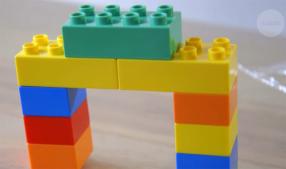If, as the saying goes, less is more, why do we humans overdo so much?
In a new paper featured on the cover of the journal Nature, University of Virginia researchers explain why people rarely look at a situation, object or idea that needs improving — in all kinds of contexts — and think to remove something as a solution. Instead, we almost always add some element, whether it helps or not.
The team’s findings suggest a fundamental reason that people struggle with overwhelming schedules, that institutions bog down in proliferating red tape, and, of particular interest to researchers, that humanity is exhausting the planet’s resources.
“It happens in engineering design, which is my main interest,” said Leidy Klotz, Copenhaver Associate Professor in the Department of Engineering Systems and Environment and co-director of the Convergent Behavioral Science Initiative. “But it also happens in writing, cooking and everything else — just think about your own work and you will see it. The first thing that comes to our minds is, what can we add to make it better. Our paper shows we do this to our detriment, even when the only right answer is to subtract. Even with financial incentive, we still don’t think to take away.”
